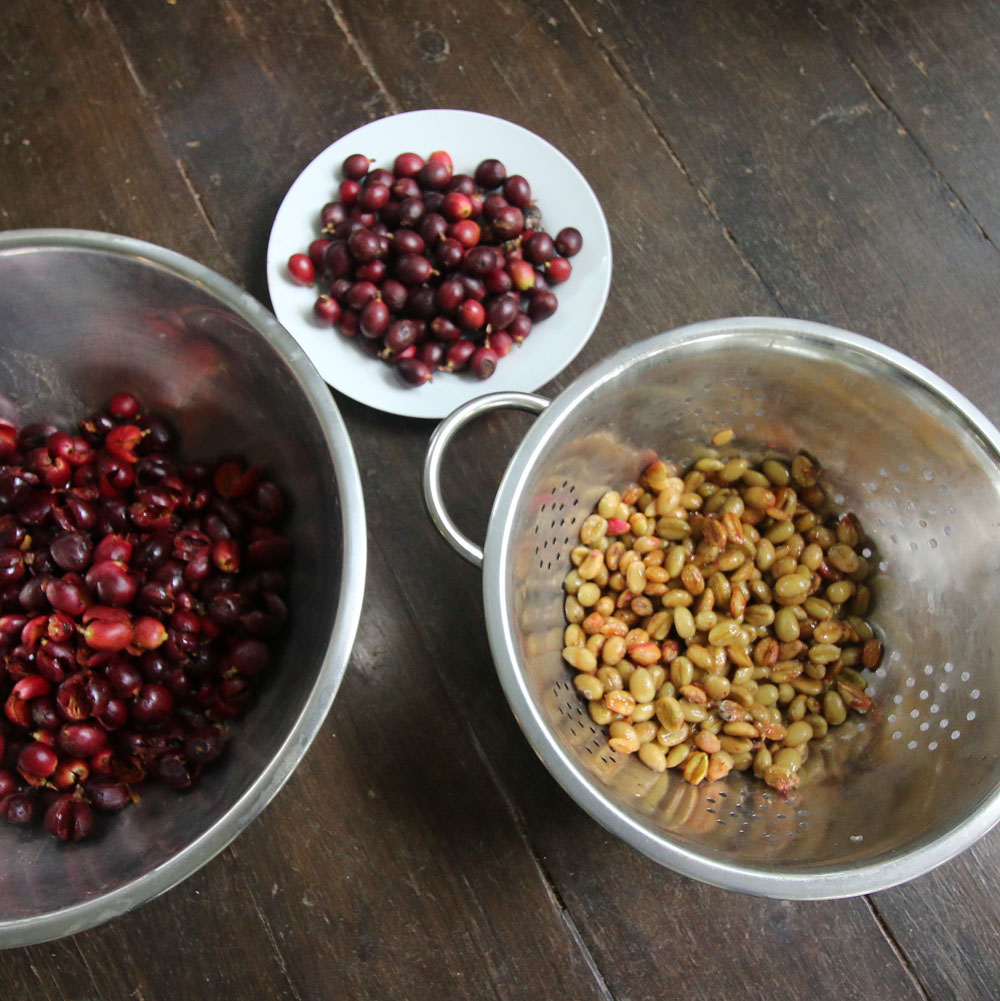Processing Coffee at Home
Now we didn’t process our coffee the easy way. I deliberately didn’t look up all the labor-saving ways to process coffee, much to Rachel’s chagrin.
Instead, I decided to do it all be hand. As I posted last week, it started with harvesting the coffee cherries from the tree we discovered in the cocoa orchard:
After that, there are four distinct phases to processing coffee.
- Removing the coffee beans from the fruit
- Fermenting/cleaning the coffee beans
- Drying the coffee beans
- Removing the “parchment” layer from the dry beans
- Roasting and grinding the beans
I’m working on a two-part video right now covering the whole process, which I then hope to edit down into a quick instructional video so you don’t have to listen to all of Rachel’s and my jokes and see all our mistakes.
Part one is already posted and covers removing the coffee beans from the fruit and starting the fermentation process:
Because we did it all by hand it was a rather time-consuming process. Using your teeth is not necessarily recommended but works much better than any implement I’ve found, unless you do it the easy way and smash with a big board, like this:
Next time.
I will add more to this post as I finish the process, eventually creating a definitive “processing coffee at home” article. I’ve already dried the beans in the video and removed the parchment layer, meaning that it’s time to roast! And today is the day. We’ll finally see how these beans taste and if Liberian coffee holds up to closer scrutiny. It’s hard to find any info on the flavor of Liberian coffee beans, so this experiment is a worthy one. I’ll share exactly how it tastes and have a couple of people give their input.
If you can’t wait to see more on growing coffee, there is more good info here. Plus, a few years ago I did a post sharing the entire process as a Hawaiian couple does it.
And don’t forget, if you’re interested in growing your own caffeine, my little booklet has the answers even if you live up north.



5 comments
I bet Nestle will be beating down your door to write their next coffee commercial, with lines like, “sloth droppings in your cup.” Although Google tells me, “Sloffee” is already taken. Nestle might have to settle for “Coth” instead. Try our new Coth blend. Mmmm…sounds delicious. ;)
OH yes. We’ve already had dozens of calls from multiple coffee producers. “Dave – please – we need you to come over to the corporate office with your guitar! Now!”
In Central America the people lay the berries out in the sun and walk on them to grind the pulp off. Seemed to work Okay.
You don’t have to de-pulp as the first step. You can let them dry with the pulp still on the bean, kind of like making coffee cherry raisins. It allows the fruit to transfer more flavor to the bean.
Though it may not be the best thing to do with your beans since you said they tasted like detergent. But it might be yummy for the soap eaters out there.
Rolling a pile of coffee cherry with a heavy marble rolling pin on a cookie sheet works great. More sanitary than a board on a cement floor.
Comments are closed.